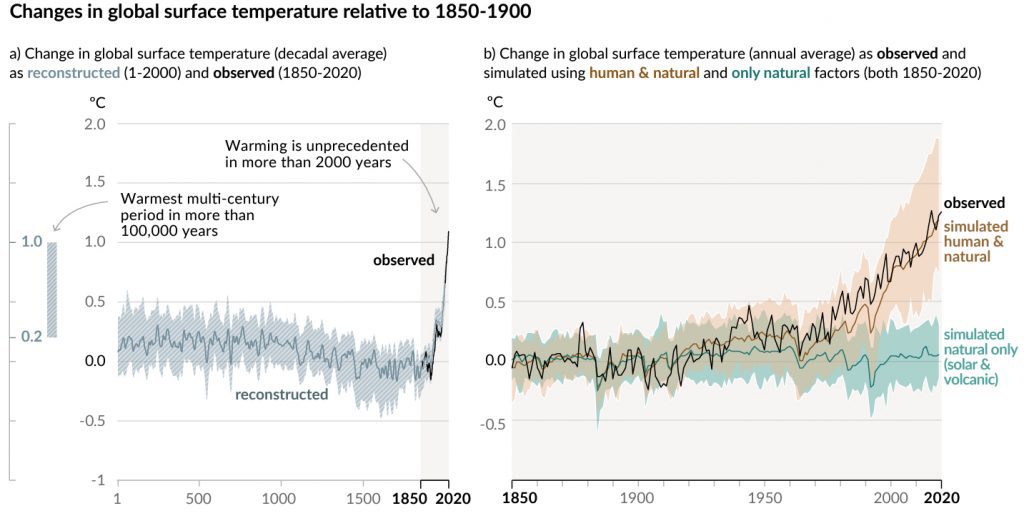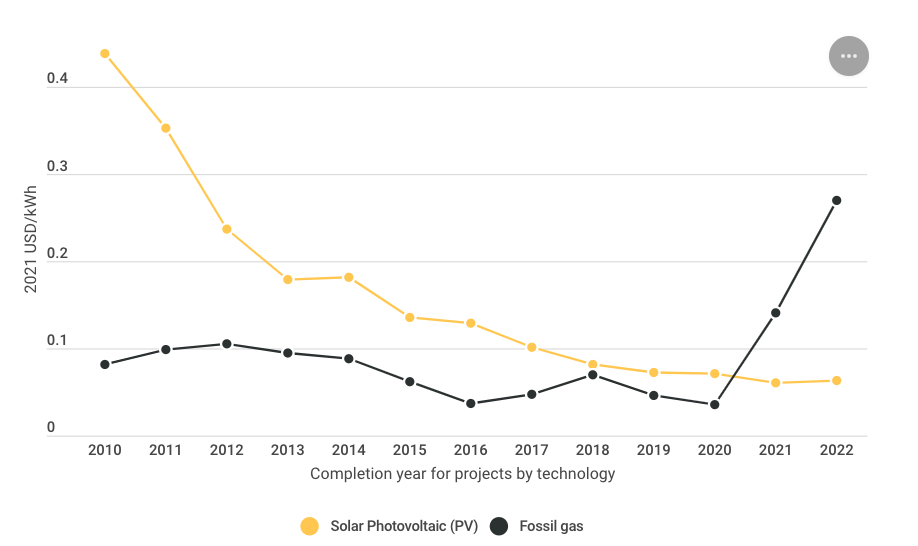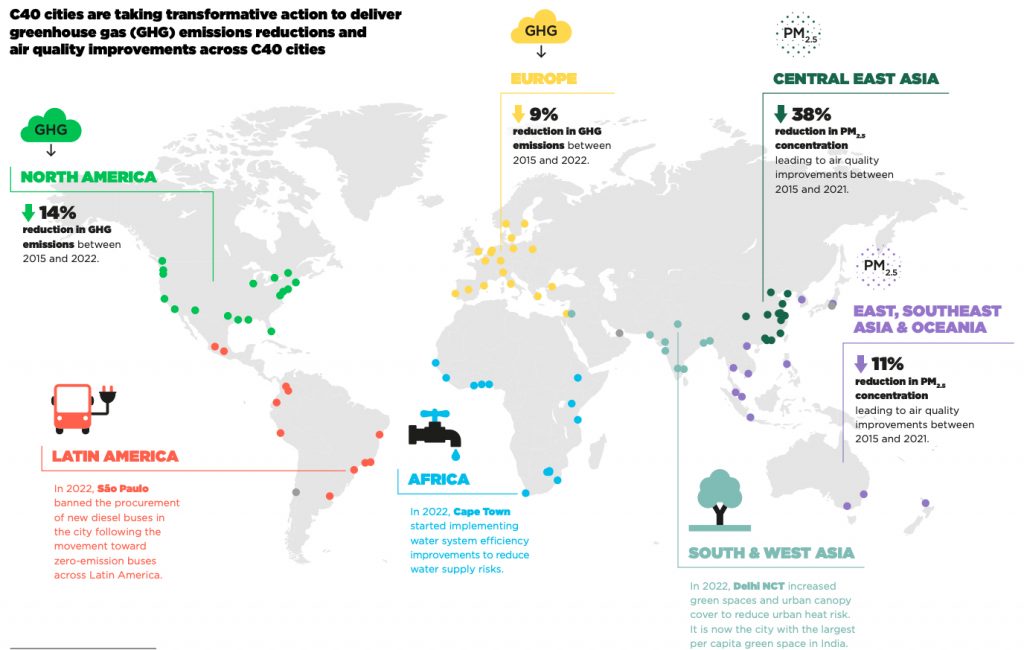The Science Behind 1.5°C Warming
The concept of net zero emerged from the alarming scientific consensus that human activity since the industrial revolution has already warmed the planet by 1.2°C above pre-industrial levels (IPCC, 2021). As an aerospace engineer fascinated by the physics of our atmosphere since childhood, I understand how this seemingly small change risks triggering catastrophic climate chain reactions.
Importantly, we are currently in an interglacial period within an ice age. Per the cyclical Milankovitch cycles related to Earth’s orbit and axis tilt, a natural cooling trend is expected over thousands of years. However, human-caused greenhouse gas emissions have dramatically disrupted this rhythm and caused rapid warming instead. This underscores the massive impact of human activity overwhelming natural climate variations.
Having grown up hiking, climbing and fishing the majestic peaks and crystal waters of the Italian Alps, I feel a deep moral obligation to preserve the beauty and habitability of our planet for future generations. When I imagine my young daughter experiencing the wonders of nature I did as a child, I am compelled to urgently accelerate solutions.

Transitioning key sectors like energy, construction and transportation to run on renewables and cut emissions is absolutely feasible with existing technologies. As an optimistic entrepreneur, I have seen firsthand how innovations can transform industries seemingly overnight when the right government policies and business models align.
My 5 years managing the corporate project portfolio at Axpo, a major European energy utility, instilled confidence that ambitious sustainability infrastructure projects can scale rapidly. And founding a tech startup taught me how leaning into uncertainty breeds the resilience and creativity needed to build a cleaner future.
The Feasibility of Reaching Net Zero
With thousands of the world’s best scientists unambiguously warning that exceeding 1.5°C warming will have devastating consequences (IPCC, 2022), getting to net zero emissions globally before 2050 is imperative. Having navigated out of a treacherous blizzard on a remote glacier at night, I know that even in the foggiest circumstances, staying focused on the goal ahead is key to finding the path forward.
Humanity is at a pivotal crossroads. We have all the technologies and capital needed for the clean energy transition. What’s missing is the political will and public pressure to implement these solutions at the speed and scale required. That’s why thought leadership to galvanize action is so critical at this moment.
The data shows we already have many renewables reaching cost parity with fossil fuels. Onshore wind and utility-scale solar PV are now the cheapest sources of new electricity generation across more than two-thirds of the world. Solar PV in 2022 cost 29% less than the cheapest fossil fuel-fired solution.
Electric vehicle costs are falling rapidly as production scales up, with EVs projected to reach purchase price parity with combustion engine vehicles by 2025 (BloombergNEF, 2023).

Energy storage, smart grids, and demand management strategies are advancing to support greater penetration of variable renewable energy sources into electricity systems worldwide. Green building techniques like passive house are mainstreaming to drastically reduce emissions from the built environment. Sustainable aviation fuels can reduce lifecycle emissions up to 80% compared to conventional jet fuel (IATA, 2022).
Though the technologies exist, aggressive policy action is essential to accelerate deployment at the pace needed. Governments globally must continue enacting regulations and market mechanisms like carbon pricing and clean energy mandates to incentivize the transition.
At the same time, businesses should get ahead of the curve by proactively developing net zero transition plans today that future-proof their long-term competitiveness and resilience. Being an early mover on sustainability creates value and manages risks. Leading companies across industries are already setting ambitious science-based targets and reorienting their strategies.
Taking Action Across Sectors
Achieving net zero requires unprecedented collaboration and mobilization across society – but it is feasible if we collectively commit to the goal. As an optimist, I believe in humanity’s capacity to accomplish tremendous things when united by a moral imperative. Just as the world mobilized an enormous industrial ramp-up to overcome fascism during World War II, we can rapidly retool our economies for a sustainable future when faced with the urgency of climate change.

Every major sector has a role to play through implementing the following types of actions, among others:
Energy: Phasing out coal power and accelerating deployment of renewables for electricity generation; electrifying heating in buildings and transport; scaling technologies like green hydrogen, bioenergy and carbon capture.
Transportation: Ramping up electric mobility, public transit and cycling infrastructure; advancing sustainable aviation fuels for air travel; optimizing supply chains for efficiency.
Buildings: Retrofitting existing buildings for high efficiency; mandating net zero standards for new construction; switching from natural gas to electric heating and appliances.
Industry: Adopting circular economy practices; increasing recycling, re-use and material efficiency; harnessing green hydrogen for heavy industry processes.
Agriculture and forests: Moving to regenerative agricultural practices that enhance carbon sequestration; halting deforestation and restoring degraded lands.
Finance: Divesting from fossil fuels; directing investment into clean technologies; incorporating climate risk analysis into financial decisions.
At the individual level, though it may seem daunting, every one of us must reflect on how to reduce our personal carbon footprints through actions like cutting air travel, adopting more plant-based diets, and demanding systemic change through votes and advocacy.
But the biggest levers reside with corporations, cities and nations taking bold steps to enact policies, innovate technologies, and build sustainable infrastructure at scale. With stakes as high as the habitability of our planet, bold, urgent action from all stakeholders is needed to bend the emissions curve and achieve net zero.
The Choice Before Us
The stakes could not be higher – failure to curb emissions and reach net zero by mid-century risks catastrophic climate disruption. As a parent, I am deeply concerned by scientific projections that children born today may experience over 4°C of warming in their lifetimes if high-polluting business-as-usual continues (IPCC, 2022).
Some climate impacts are already locked in, but we still have a window of opportunity to alter our trajectory. As an engineer and entrepreneur, I believe in humankind’s capacity to innovate our way out of this crisis if we act quickly and collaboratively. But further delay will rapidly close that window.
The choice is increasingly stark: continue on our current high-emissions path and face a hellish future of collapsing ecosystems, scarcity-driven conflict, and a climate inhospitable to civilization as we know it. Or pivot rapidly to decarbonize our economies and build a more prosperous world energized by renewables, regenerated natural systems, and clean technology innovation.
Having summited Alpine peaks during violent electrical storms, I know we cannot wait out worsening climate disruption in hopes it will pass – we must start actively descending to safer terrain. That terrain is the path to net zero.

Achieving net zero will require transformational political, economic and social will. But the alternative of unchecked warming is so morally and existentially unacceptable, I believe society will mobilize an ambitious sustainability revolution when the climate crisis intensifies further. We must channel fear into urgent, collective action.
As Greta Thunberg said, “Hope is not passive. Hope is not blah blah blah. Hope is telling the truth. Hope is taking action.” The hopeful truth is that humanity has the scientific knowledge and technological tools to create an equitable, net zero future. But the time for complacency, denial and incremental measures has expired. Preserving life as we know it on this fragile planet demands courageous action starting now. Our children’s future hangs in the balance.
Joining the Movement
The task ahead is monumental, but momentum is accelerating daily as more of society grasps the urgency of achieving net zero emissions globally by mid-century. As anthropologist Margaret Mead famously stated, “Never doubt that a small group of thoughtful, committed citizens can change the world; indeed, it’s the only thing that ever has.”
Grassroots climate activism and net zero commitments from forward-thinking cities, companies and organizations are swelling into a powerful tide of change. As of 2023, over 3,000 major companies employing over 25 million people and with $5.5 trillion in revenue have pledged to achieve net zero and to follow Science based targets (SBTi) – and this tide is rising daily.
More than 70 countries, including the biggest polluters – China, the United States, and the European Union – have set net-zero target dates, representing over 75% of global GDP and greenhouse gas emissions. And 96 cities holding over 20% of the world’s GDP have also made net zero commitments – showing that local leadership can drive national policy.

This momentum must rapidly translate into policies, investment and infrastructure delivering steep emissions cuts this decade. Seizing the enormous health, economic and social benefits of the sustainability transition will require all hands on deck.
There are countless ways for individuals, organizations and communities to join this epoch-defining movement: voting for climate-conscious leaders, halving food waste, educating others on social media, installing solar panels, advocating for reforms, attending protests, cleaning up green spaces…every contribution expands our impact.
Future generations will look back at this period as the pivot point when humanity chose its destiny in the face of climate crisis. I am energized knowing that when historians assess our response to this emergency, we can say we did everything in our power to turn the tide. The time for climate action is now – history will be made by those courageous enough to rise to this challenge. Who will you be in this story?
About the Author
Alex Benincà is the founder and CEO of B-works, a venture builder accelerating sustainability through digital innovation. He holds an MSc in Management, Technology and Economics from ETH Zurich and a BSc in Aerospace Engineering from Ryerson University. Alex has managed a project portfolio over $1Billion at Axpo, an international energy utility, and successfully founded startups including Cosmobutler (exit in 2019). He is dedicated to accelerating society towards sustainable energy and net zero.
References:
IPCC, 2021. Climate Change 2021: The Physical Science Basis. [online] Cambridge: Cambridge University Press. Available at: https://www.ipcc.ch [Accessed on 3 October 2023].
IPCC, 2022. Climate Change 2022: Impacts, Adaptation and Vulnerability. [online] Cambridge: Cambridge University Press. Available at: https://report.ipcc.ch/ [Accessed on 3 October 2023].
BloombergNEF, 2023. Electric Vehicle Outlook 2023. [online] Bloomberg Finance L.P. Available at: https://about.bnef.com/electric-vehicle-outlook/
[Accessed on 3 October 2023].
IATA, 2022. Sustainable Aviation Fuels. [online] International Air Transport Association. Available at: https://www.iata.org/en/programs/environment/
[Accessed on 3 October 2023].
NASA, 2022. Milankovitch Cycles and Their Role in Earth’s Climate. [online] NASA Climate Change. Available at: https://climate.nasa.gov/news/2948/ [Accessed on 3 October 2023].
